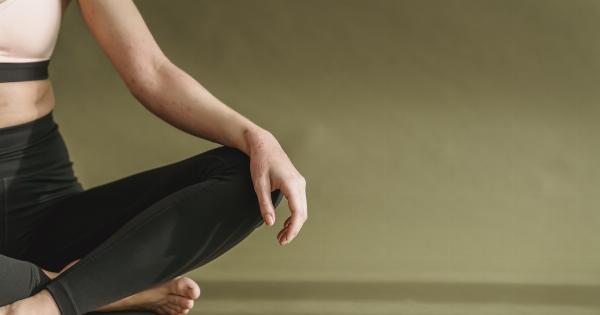Venous deficiency is a condition in which the veins in your legs have trouble sending blood back to the heart. This can lead to a range of symptoms, from mild discomfort to more serious complications.
Recognizing the signs and symptoms of venous deficiency is crucial for early detection and appropriate treatment. This picture guide will help you understand the various symptoms associated with venous deficiency.
Symptom 1: Varicose Veins
One of the most common symptoms of venous deficiency is the appearance of varicose veins. These are enlarged and twisted veins that are usually visible on the surface of the skin. Varicose veins can be blue or purple and may bulge out.
They are often accompanied by feelings of heaviness or aching in the legs.
Symptom 2: Swelling
Swelling, also known as edema, is another common symptom of venous deficiency. It occurs when excessive fluid accumulates in the tissues of the legs and ankles.
The swelling can range from mild to severe and may be accompanied by a feeling of tightness or discomfort.
Symptom 3: Leg Cramps
Leg cramps, especially at night, can be a symptom of venous deficiency. These cramps are usually sudden and intense, causing a sharp pain in the calf muscles. They can last for a few seconds or several minutes and may be accompanied by muscle twitching.
Symptom 4: Itching and Dry Skin
Itching and dry skin can occur in individuals with venous deficiency due to poor circulation. The skin may feel dry, flaky, or tight, and persistent itching may be present.
Scratching the itchy skin can lead to skin irritation and even ulcers in severe cases.
Symptom 5: Skin Discoloration
Venous deficiency can cause changes in the color of the skin, particularly around the ankles and lower legs. The skin may become discolored, appearing reddish-brown or purplish.
This discoloration is due to the accumulation of blood and increased pressure in the veins.
Symptom 6: Leg Ulcers
In advanced stages of venous deficiency, leg ulcers may develop. These are open wounds that are slow to heal and often recur. Leg ulcers can be painful and can increase the risk of infection.
They usually develop on the lower legs, especially around the ankles.
Symptom 7: Heavy and Fatigued Legs
A common symptom reported by individuals with venous deficiency is the sensation of heavy and fatigued legs. The legs may feel tired, achy, and easily prone to muscle fatigue.
This symptom often worsens with prolonged standing or sitting as the blood pools in the veins.
Symptom 8: Throbbing or Burning Sensation
Some individuals with venous deficiency may experience a throbbing or burning sensation in their legs. This sensation can vary in intensity and may worsen after prolonged periods of sitting or standing.
It can be accompanied by a feeling of warmth or tenderness in the affected area.
Symptom 9: Restless Legs Syndrome
Restless legs syndrome (RLS) is a condition characterized by an uncontrollable urge to move the legs, usually due to uncomfortable or unpleasant sensations.
RLS can be a symptom of venous deficiency and often occurs during periods of rest or in the evening.
Symptom 10: Slow-Healing Wounds
If you have venous deficiency, you may notice that wounds or sores on your legs take longer to heal than normal. This is because the compromised blood flow can impede the healing process.
Even minor injuries can require an extended time to fully heal in individuals with venous deficiency.































